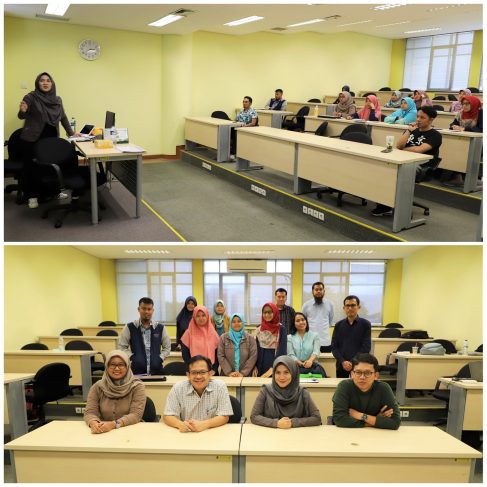The Effect of Small Scale Port Investment Impacts on the Local Economy
Nino Eka Putra ~ Humas FEB UI
DEPOK – The Department of Economics FEB UI holds a Weekly Seminar with the topic “Does Small Scale Port Investment Impact the Local Economic Activity? Evidence from Small Port Development in Indonesia “which took place in room 407, Postgraduate Building, Wednesday (02/12/2020).
Staff of the Directorate General of Sea Transportation of the Ministry of Transportation of the Republic of Indonesia as well as alumni of the 2018 MPEB FEB UI, Indra Degree Karimah explained that this study aims to find empirical evidence whether small-scale local feeder ports investing in public infrastructure affect economic activity at the sub-district level.

The motivation for this research stems from the fact that the public invests in small-scale projects when market failures occur. However, there is a lack of empirical studies on the impact of this investment due to constraints on the availability of data and the small marginal contribution at a more aggregated level.
Using differences that exploit the staggered implementation of small port operations, it was found that opening small ports increases the intensity of night light, a measure that captures local economic activity by 1.8 percent. Although the impact is relatively small and takes two years after operation, the benefits extend beyond the sub-district where the port is located and outweigh the costs.
“Many studies provide empirical evidence that ports have a positive relationship with areas of economic growth. However, this study only focuses on large ports without taking into account the existence of small ports. Although small ports have the potential to generate local economic benefits beyond their role in supporting large ports in the port system. Potential is even higher, especially in areas with large sea areas. We use samples from Indonesia, as the 20 largest countries in the world and consist of islands to analyze the small impact of ports,” said Degree.
In the past decade, the Indonesian government has gradually tried to improve inter-island connections by investing in small ports throughout the country, providing us with the opportunity to evaluate this investment policy. “Using the Difference-in-Difference (DiD) model, we exploit various operating times for small ports to estimate the effects of small investment ports at the sub-district level,” he said.
“We find that sub-districts with small ports that are just operating are experiencing 1.8 percent higher in local economic activities that are captured by night light intensity. Although the effect is relatively small, our results contrast with Park & Seo (2016), which shows the negligible effect of a small port on local economic development. We also find that the economic benefits of small ports reach far beyond the sub-districts where they are located directly,” he added.
Meanwhile, the effect takes about two years. Given the positive impact of small ports, policy makers may still want to invest in small-scale port development. However, it is possible to accelerate and increase the benefits of small ports in the long run by implementing a complementary policy.
These policies could include increasing cooperation with other ports simultaneously in the region to attract trade flows. “However, further research is needed to determine the effectiveness of this policy, especially for small ports so that applications can be run effectively. By comparing the benefits and costs, the results show that the benefits of a small port investment outweigh the costs.” the lid. (Des)






